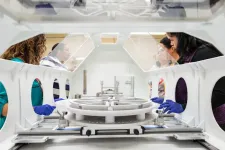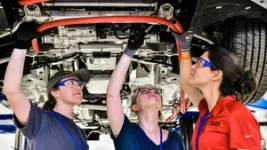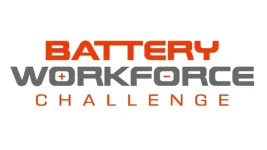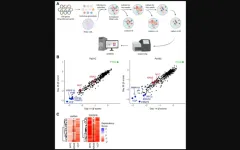(Press-News.org) NASA's OSIRIS-REx spacecraft is cruising back to Earth with a sample it collected from the rocky surface of asteroid Bennu. When its sample capsule parachutes down into the Utah desert on Sept. 24, OSIRIS-REx will become the United States’ first-ever mission to return an asteroid sample to Earth.
After seven years in space, including a nail-biting touchdown on Bennu to gather dust and rocks, this intrepid mission is about to face one of its biggest challenges yet: deliver the asteroid sample to Earth while protecting it from heat, vibrations, and earthly contaminants.
“Once the sample capsule touches down, our team will be racing against the clock to recover it and get it to the safety of a temporary clean room,” said Mike Moreau, deputy project manager at NASA's Goddard Space Flight Center in Greenbelt, Maryland.
So, over the next six months, the OSIRIS-REx team will practice and refine the procedures required to recover the sample in Utah and transport it to a new lab built for the material at NASA’s Johnson Space Center in Houston. There, scientists will unpack the sample, distribute up to a quarter of it to the OSIRIS-REx science team around the world for analysis, and curate the rest for other scientists to study, now and in future generations.
Flight dynamics engineers from NASA Goddard and KinetX Aerospace are reviewing the trajectory that will bring the spacecraft close to Earth. At Lockheed Martin in Denver, team members are keeping tabs on the spacecraft and preparing a group to recover the sample capsule. This summer, crews in Colorado and Utah will practice all of the steps to recover the capsule safely, while protecting it from contamination. At Johnson Space Center, the curation team is rehearsing their procedure to unpack and process the sample inside glove boxes. Meanwhile, members of the sample science team are preparing the investigations they will perform with the sample material once received.
“The OSIRIS-REx team has already performed amazing feats characterizing and sampling asteroid Bennu,” said Dante Lauretta, OSIRIS-REx principal investigator from the University of Arizona, Tucson. “These accomplishments are the direct result of the extensive training and rehearsals that we performed every step of the way. We are bringing that level of discipline and dedication to this final phase of the flight operations.”
Asteroids are the ancient materials left over from the original era of planet formation and may contain molecular precursors to life. Scientists have learned a great deal from studying asteroid fragments that have naturally reached the ground as meteorites. But to understand whether asteroids played a role in delivering these compounds to Earth’s surface over 4 billion years ago, scientists need a pristine sample from space, free from terrestrial contaminants.
In addition, the most fragile rocks observed on Bennu probably would not have survived passage through Earth’s atmosphere as meteorites. “There are two things pervasive on Earth: water and biology,” said Dr. Jason Dworkin, OSIRIS-REx project scientist at NASA Goddard. “Both can severely alter meteorites when they land on the ground and muddle the story told by the sample’s chemistry and mineralogy. A pristine sample could provide insights into the development of solar system.”
On Sept. 24, as the OSIRIS-REx spacecraft flies by Earth, it will release its sample return capsule, thereby ending its primary mission. The capsule, which is estimated to hold about a cup of Bennu’s material – 8.8 ounces +/- 3.6 ounces (250 grams +/- 101 grams) to be precise – will land within a 37-mile by 9-mile ellipse (59 km by 15 km) within Department of Defense property that is part of the Utah Test and Training Range and Dugway Proving Grounds.
OSIRIS-REx team members from NASA Goddard, KinetX, Lockheed Martin, and NASA's Langley Research Center in Hampton, Virginia, are using computer models to test navigation plans in various weather, solar activity, and space debris scenarios to ensure that when the capsule enters Earth’s atmosphere at 10:41 a.m. ET (8:41 a.m. MT), it will touch down inside the targeted area 13 minutes later.
Recovery crews are responsible for securing the sample return capsule’s landing site and helicoptering it to a portable clean room located at the range. Additionally, crews will collect soil and air samples all around the landing capsule. These samples will help identify if any minute contaminants contacted the asteroid sample.
Once the capsule is inside the building with the portable clean room, members of the team will remove the heat shield, back shell, and other components to prepare the sample canister for transport to Houston.
The return to Earth of samples from asteroid Bennu will be the culmination of a more than 12-year effort by NASA and its mission partners but marks the beginning of a new phase of discovery as scientists from around the world will turn their attention to the analysis of this unique and precious material dating from the early formation of our solar system.
NASA’s Goddard Space Flight Center provides overall mission management, systems engineering, and the safety and mission assurance for OSIRIS-REx. Dante Lauretta of the University of Arizona, Tucson, is the principal investigator. The university leads the science team and the mission's science observation planning and data processing. Lockheed Martin Space in Littleton, Colorado, built the spacecraft and provides flight operations. Goddard and KinetX Aerospace are responsible for navigating the OSIRIS-REx spacecraft. Curation for OSIRIS-REx, including processing the sample when it arrives on Earth, will take place at NASA’s Johnson Space Center in Houston. International partnerships on this mission include the OSIRIS-REx Laser Altimeter instrument from the Canadian Space Agency and asteroid sample science collaboration with the Japan Aerospace Exploration Agency’s Hayabusa2 mission. OSIRIS-REx is the third mission in NASA's New Frontiers Program, managed by NASA's Marshall Space Flight Center in Huntsville, Alabama, for the agency's Science Mission Directorate Washington.
END
NASA prepares for historic asteroid sample delivery on Sept. 24
2023-03-24
ELSE PRESS RELEASES FROM THIS DATE:
11 ways to improve airlines for customers
2023-03-24
COLUMBIA, Mo— The name of the game is customer satisfaction, especially in the airline industry where companies are constantly jockeying for business by promising better service than their competitors. Now a professor at the University of Missouri has used artificial intelligence to sort through thousands of customer reviews and identify where airlines are falling short.
Sharan Srinivas, an assistant professor with a joint appointment in the Department of Industrial and Systems Engineering and the Department of Marketing, used AI to analyze nearly 400,000 unique, ...
New mining technology uses CO2 as tool to access critical minerals
2023-03-24
A mining technology pioneered by researchers at the Bureau of Economic Geology at The University of Texas at Austin could reduce the amount of energy needed to access critical minerals vital for modern energy technologies and capture greenhouse gases along the way.
Transitioning the world’s energy to technologies and sources with low-carbon emissions will take, in part, tremendous amounts of lithium, nickel, cobalt and other critical minerals that exist in low concentrations in the Earth’s crust. Mining those elements takes much energy and produces waste, which can negatively affect the environment and create significant amounts of greenhouse ...
Wastewater to energy: new treatment process can improve biorefinery sustainability
2023-03-24
Wastewater from biorefineries that convert plants into fuel is full of organic materials that cannot be efficiently treated with conventional wastewater systems, making it costly and energy-intensive to manage.
However, those rich organic materials are an untapped source of chemical energy that can be recovered as valuable products, including biogas, a clean-burning renewable fuel.
A study by researchers at the Department of Energy’s Center for Advanced Bioenergy and Bioproducts Innovation (CABBI) found that recovering resources from wastewater can substantially improve the economic and environmental sustainability of second-generation ...
U.S. Department of Energy and Stellantis announce the Battery Workforce Challenge
2023-03-24
The U.S. Department of Energy (DOE) and Stellantis today announced the launch of the Battery Workforce Challenge, which includes a three-year collegiate engineering competition; vocational training; youth education in science, technology, engineering and math (STEM); and career and technical education.
DOE has set a bold target to address the climate crisis and puts our nation on a path to achieve net-zero emissions, economy-wide, by 2050 for the benefit of all Americans. Key to this target goal are the design and development of advanced batteries to electrify ...
Study finds higher risk of sleep problems in gay, lesbian, and bisexual youth
2023-03-24
Toronto, ON - A new national study, published in LGBT Health, finds that lesbian, gay, and bisexual (LGB) youth are twice as likely to report trouble falling or staying asleep than their straight peers. Greater depression, stress, and family conflict contribute to the sleep problems of LGB youth.
“Young people who identify as lesbian, gay, or bisexual may face discrimination and negative attitudes because of their sexual orientation. These experiences can make it harder for them to get a good night’s sleep,” says lead author, Jason Nagata, MD, assistant professor of pediatrics at the University of California, San Francisco. “Difficulties getting ...
UW researchers identify cell type that could be key to preventing marrow transplant complication
2023-03-24
A bone marrow transplant can be a lifesaving treatment for people with relapsed blood cancers, but a potentially lethal complication known as graft-versus-host disease put limitations on this procedure. New research from the University of Wisconsin–Madison is helping to change that by identifying the cell population that causes GVHD, a target that may make bone marrow transplants safer and more effective.
An allogenic (from a donor) bone marrow transplant is a common treatment for blood cancers and other diseases of the immune system. During the transplant, the patient’s immune cells are replaced with the donor’s ...
Buprenorphine after nonfatal opioid overdose results in reduced risk of overdose death
2023-03-24
Receiving medication for opioid use disorders, such as buprenorphine after an overdose, leads to lower mortality risk, according to a Rutgers study.
Drug overdose deaths are a significant public health concern in the United States. According to the National Center for Health Statistics, there were more than 105,000 drug overdose deaths in 2021, which were largely attributed to opioids. Rutgers researchers found that opioid-involved overdose deaths following nonfatal overdose events are largely preventable with buprenorphine medication for opioid use disorder.
The medication, approved by the Food and Drug Administration, is a highly effective ...
Narrowing the digital divide for health care
2023-03-24
Many parts of rural America with less access to health care also have limited broadband internet that could help them take advantage of increasingly popular online health services.
A new study by the University of Cincinnati highlighted disparities in access to digital technology that could widen the gap in access to health care. The study found that socially vulnerable communities in the United States face more barriers to adequate health care, live in areas with fewer health care resources and have less access to high-speed internet.
UC researchers ...
Corporate investment could improve climate-tech innovation
2023-03-24
MADISON—Corporate investments in climate-tech start-ups are a growing but overlooked aspect of energy innovation. According to a new report from Morgan Edwards, a professor at the La Follette School of Public Affairs at the University of Wisconsin–Madison, and her lead co-author at University of Maryland, these investments should be more fully considered as methods to advance climate technology. The report was published in the journal Joule on March 17.
Start-up companies have the potential to rapidly commercialize innovation, but they don’t always have the resources to make such ventures successful. Corporations, on the other ...
Genes & Cancer | VCP/p97 as a therapeutic target in KRAS-mutant pancreatic cancer
2023-03-24
“In summary, our goal was to identify additional therapeutic targets for KRAS-driven PDAC.”
BUFFALO, NY- March 24, 2023 – A new research paper was published in Genes & Cancer on March 10, 2023, entitled, “VCP/p97, a pleiotropic protein regulator of the DNA damage response and proteostasis, is a potential therapeutic target in KRAS-mutant pancreatic cancer.”
Researchers have recently shown that proteins involved in the DNA damage response (DDR) are critical for KRAS-mutant pancreatic ductal ...






